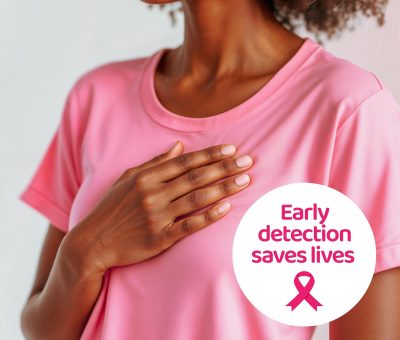Understanding cancer staging

Oftentimes, phrases such as ‘stage 0’, ‘stage 4’ seem like just statements thrown around by those in the medical field with the lay man unable to make sense of them. However, Dr Noleb Mugisha from the Uganda Cancer Institute (UCI) throws light on what these mean during cancer diagnosis.
Dr Mugisha says staging is used to classify a cancer to its extent; how much and how far the cancer has grown. The number also helps in showing the body parts, which the cancer has invaded and the size of tumour, which form swellings. “While the general staging is 1-4, it is for simplicity because some cancers are staged differently,” he says.
On hearing these numbers, many get scared, but he says these numbers help the cancer care team in customising a treatment plan, predict chances of recovery and how well the treatment plan will work. Additionally, since most cancer treatment is developed through research, staging helps doctors create groups to ease studying and clinical trials.
Stages
Before any cancer is given a stage, in addition to physical examination, Dr Mugisha says an oncologist carries out various tests such as ultrasound scanning, X-rays, and blood tests depending on the cancer. “These help in identifying how advanced the cancer is,” he says.
The most commonly used staging system is the TNM (tumour, lymph-node, metastasis) and is ideal for most solid tumour cancers such as breast cancer. “However, there are other systems used to stage other solid tumour cancers, as well as blood cancers,” Dr Mugisha says.
What TNM means
T (tumour) – describes the size of the main tumour. T usually has a number from one to four and the higher the number, the bigger the tumour, and sometimes the deeper into the organ or nearby tissue it has grown.
N (lymphnode) – helps to show if the cancer has spread to surrounding lymph nodes. It has numbers from zero to three, where N0 means the cancerous cells have not yet gone to any of the lymph nodes. The numbering also shows the size and location of the lymphnodes.
M (metastasis) – helps to show if the cancer has gone to any other body part through the blood and it has numbering such as M0 where there is no spread, while M1 means spread to other body parts.
With TNM system, Dr Mugisha says the oncologist easily provides answers to questions such as how large the main tumour is (T)? Has the tumour spread to the lymphnodes (N)? If yes, where and to what extent? Have the cancer cells spread to other body parts (M)? If yes, where and to what extent?
Is there presence of bio or tumour markers linked to the cancer that may ease the monitoring of the cancer progression or response to treatment? “Markers are substances found in the urine or blood of a patient with cancer that only increase when one has the particular cancer type,” Dr Mugisha explains.
Other staging factors
Apart from the factors above, Dr Mugisha says there are other factors that are considered when staging cancers. These include:
• Grade: This is the appearance of the cancerous cells under a microscope. For example, they could be low grade if they look more like normal cells. Conversely, they are a high grade when they look totally abnormal. While high grade cancer cells grow and spread very fast, low grade cancer cells grow and spread slowly.
• Location: The location of the tumour may either make it harder or easier to deal with.
• Genetics: DNA changes in the cancer cells will help the doctor know if it will spread easily, as well as the ideal treatment plan. With all these ascertained, then staging can be done.
Staging may be pathologic or clinical.
• Clinical stage: It is given before treatment commences; based on imaging test results at the time of diagnosis. While it is less informative, doctors use it to choose a treatment plan.
• Pathologic stage: It is based on results from tests and exams on finding the cancer, and what the doctors learn about the cancer during and after surgery.
Dr Mugisha says the two stages give a different picture. “For example, surgery may unearth something that an MRI test missed, hence the result from the pathologic stage may be a higher stage than was presented by the clinical stage.”
Stage grouping
Dr Mugisha shares that the TNM description is ideally the general way of grouping as it assigns numbers between zero and four.
“Sometimes, these stages are subdivided using letters; A, B, C as is seen in cervical cancer which is staged as stage 1, stage 2A, stage 2B, stage 2C, stage 3 and stage 4,” he says.
However, on the whole, stage 0 shows a precancerous change, stage 1 shows that the tumour is usually small and has not grown outside of the organ it started in, stages 2 and 3 show that the tumour is larger or has grown outside of the organ it started in to nearby tissue. However, for cervical cancer, while stage 2A is early, stage 2B and C are late.
Stage 4 means the cancer has spread through the blood stream to other parts of the body.
Other staging systems
These include:
• International Federation of Gynaecology and Obstetrics (FIGO) staging system: Used for ovarian, endometrial, cervical, vaginal and vulvar cancers. Though used for reproductive organ cancers, it gets its precedence from the TNM system.
• Ann Arbor Staging System: Used when staging non-Hodgkin lymphoma.
• Cotswold staging system: Used to stage Hodgkin lymphoma.
• Rai and Binet staging systems: Used to stage chronic lymphocytic leukaemia (CLL).
• International and the Durie-Salmon staging systems: Used to stage multiple myeloma.
However, these systems are not exhaustive as several cancers are staged differently using different systems.
Restaging: When a cancer re-occurs or advances, while the naming will not change, restaging helps oncologists plan better for the new development. “While the stage will never change, if the tumour gets bigger or spreads more, it will say, move from T1 to T2.”
Summarily, the earlier the diagnosis, the better the chance for longer survival.


















